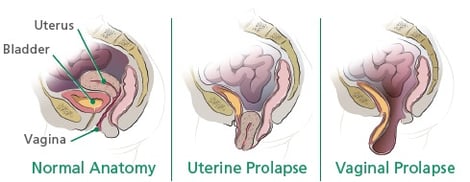 The topic of urodynamic studies (UDS) before prolapse surgery is highly debated in urogynecology. There have been previous studies conducted on women who had prolapse and uncomplicated stress urinary incontinence (SUI). Currently, there is no possibility of a universal consensus for UDS before prolapse surgery in women who have concomitant symptomatic SUI. The issue is that there is currently no evidence that the surgery outcome will be altered or not by being given a UDS. Thus, we must test further using randomized studies to advance and see if UDS can be useful before prolapse surgery.
The topic of urodynamic studies (UDS) before prolapse surgery is highly debated in urogynecology. There have been previous studies conducted on women who had prolapse and uncomplicated stress urinary incontinence (SUI). Currently, there is no possibility of a universal consensus for UDS before prolapse surgery in women who have concomitant symptomatic SUI. The issue is that there is currently no evidence that the surgery outcome will be altered or not by being given a UDS. Thus, we must test further using randomized studies to advance and see if UDS can be useful before prolapse surgery.
Preoperative UDS Should Be Performed
If a patient with a pelvic organ prolapse (POP) has either stages IIIa, IIc, or lp, she is more likely to have symptomatic vaginal bulging and asymptomatic for stress or urgency incontinence. This case is just one example of where preoperative USD should be performed before the prolapse surgery. It’s been found that POP and lower urinary tract symptoms (LUTS) usually coexist with each other. But, UDS involve objective assessments of any dysfunction in the urinary tract system. Some UDS could prevent and save people from POP. However, not many are willing to perform this option. Performing a preoperative UDS on patients before prolapse surgery could identify the patient's risk when it comes to the persistence of any other urgency where it is postoperative, incontinence, or voiding. By performing a UDS on a patient, you could help them assess the risks, pros, cons and ways to come up with a better treatment plan such as optimal preoperative counseling.
Preoperative UDS Should Not Be Performed
One of the most recent studies1 on this subject had 80 patients who suffered from POP and occult SUI. Each group was randomly assigned to prolapse surgery and concurrent TVT. After 24 months, they found that both had similar subjective and objective outcomes. Thus, it was concluded that the results showed a support policy that routine insertion of a sling in women with occult SUI at the time of prolapse repair is questionable and should be subject to shared decision-making between the clinician and patient.
The reliability and clinical impact that UDS has had on prolapse patients remains one of the most unsure issues in the field of urogynecology. The only literature that is published focuses on UDS as a surgical treatment of SUI for women. The problem lies in uncomplicated and pure SUI are both a conflicting and heterogeneous trait. There is very little data when it comes to USD in the preoperative evaluation of women who are suffering from POP. So, the question is, can UDS change the choice of surgery? Or is it just a waste of resources and time?
Urgency Incontinence & Voiding Dysfunction
Another issue is that UDS tests can help predict symptoms of an overactive bladder, but only with a reduced cure rate. Nguyen et al2 found that two-thirds of women were diagnosed with POP and symptomatic DO after prolapse repair. Nguyen et al. also found that two-thirds of women who have POP and concomitant symptomatic DO still have resolutions of DO even after the prolapse surgery. Thus, this means that it wasn’t a very effective method to use UDS before prolapse surgery.
Discussion
There have been signs that show UDS could better help identify urinary dysfunctions such as DO and SUI. However, these cases are rarely translated into a management plan or alter the type of surgical procedures being done. Plus, there is not enough data to demonstrate that UDS can help improve both subjective or objective outcomes of prolapse surgery. So, it is still recommended to go with surgical correction of prolapse because it can help improve the symptom of vaginal bulging, can also help the symptoms of OAB, and even cure SUI. To say the very least, UDS should be a last resort for selected patients with genital prolapse and only if the UDS would be able to affect future treatment or management plans.
Conclusion
There is no proof, and it is not possible to reach a universal agreement when it comes to the role of UDS before prolapse surgeries. It’s been noted that UDS could potentially add valuable information for women who are suffering or undergoing POP surgery because it could help facilitate the sounding of patients. However, there is no proof to demonstrate that previous UDS alters the operation. This leads us to believe that there must be more randomized studies for further testing to be done.
References
- Serati M, Giarenis I, Meschia M, Cardozo L. Role of urodynamics before prolapse surgery. Int Urogynecol J. 2015;26(2):165-8. Link
- Smith TM, DeLancey JOL, Fenner DE. Post-reduction stress urinary incontinence rates in posterior versus anterior pelvic organ prolapse: a secondary analysis. International urogynecology journal. 2013;24(8):1355-1360. doi:10.1007/s00192-012-2019-1. Link

